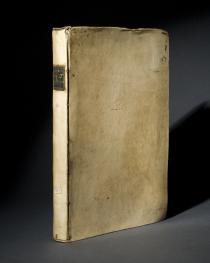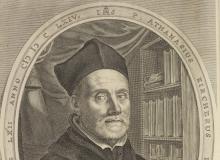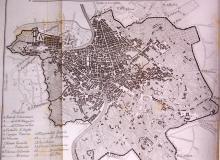China Illustrata
Strictly speaking this work is formally known by its full Latin title:
Athanasii Kircheri e Soc. Jesu China monumentis : qua sacris quà profanis, nec non variis naturae & artis spectaculis, aliarumque rerum memorabilium argumentis illustrata auspiciis Leopoldi primi, Roman. Imper. semper Augusti, munificentissimi mecaenat. Alternatively it is also known by its shorter title China monumentis or by a variant China Illustrata.
Essentially, for the non-Latin reader, this meant that Athanasius Kircher (of the Society of Jesus) acted as a compiler, bringing together information on things both religious and secular, as well as concerning the various natural things of China (such as flora, fauna and landscape), in addition to anything else that might be of interest, such as exceptional handicrafts and so on. These items were accompanied by numerous illustrations.
As was the custom in those days, and indeed into the present, the work was dedicated to a patron, or a prospective patron, who is described in somewhat flowery language as a way of further prompting that person’s goodwill and support. A study of the works published by the Jesuits during this time would reveal the extent to which they nurtured and pan-European network of supporters and benefactors. In this instance the work was dedicated to “the August Roman Emperor Leopold I” (who reigned from 1657-1705), “a most generous (munificent) patron”.
Kircher never traveled to China but because he was based at the Jesuits’ College in Rome, where many China-based missionaries had trained and studied, he was well placed to compile the reports that they sent back to the Jesuits’ administrative offices in Rome.
The publication of this work reveals more than just those things Kircher chose to include about China (some of which was actually rather fanciful, as for instance ‘the flying cats of Kashgar’). According to research by David Richtmyer, the Rare Books Librarian and Senior Cataloger at the Burns Library, Boston College, there is an interesting back-story to Kircher’s successful publication.
Kircher was already a well-known author, and thus had a usual publisher with whom he dealt. (By the end of his life he had published 40 works). His regular publisher was the printing house in Amsterdam run by the business partners Janssonius van Waesberge and Elizer Weyerstraten. They produced a copy of his work in 1667, but it is known that another Amsterdam publisher, Jacob van Meurs, also brought out a copy in the same year. This latter version was therefore a pirated copy, and somehow Van Meurs had obtained the original sheets of text, and had commissioned a new set of engravings. Van Waesberge and Weyerstraten sought legal redress about this act of copying, and thus held a meeting with Van Meurs, a public notary and a third printer.
According to Richtmyer (on the BC Library website) “at this meeting, on 27 June 1667, the aggrieved parties demanded that Van Meurs hand over the entirety of his copy of the work: all his printed copies along with his copper and woodblock plates. Further, he was to cease and desist from publishing this work again. In return Van Meurs received 3,450 florins, which basically covered the costs of his ‘reprint.’ Subsequent printings at the shop of Janssonius van Waesberge and Weyerstraten (and later with Weyerstraten’s widow) used the slightly smaller engravings that Van Meurs had commissioned, though the text remained precisely the same.” A further question arises as to why the copyist is compensated for the destruction of his copy.
Apparently Van Meurs was paid this money – even though he was the offender in this instance – because some years earlier the other two had actually copied something of Van Meurs, and had clearly profited from that act. Therefore the other printer and the notary clearly worked some sort of truce between Van Meurs and his two complainants. (Van Meurs was a significant printer and globe maker in his own right, so the fact that he had something worth copying is not unlikely).
The manner in which Kircher’s work was copied says much, therefore, about not only the predicted popularity of his China Illustrata but also about the lax attitudes to copyright in the early modern world. Or at least, while printers in centers as distinguished as Amsterdam wanted to maintain exclusive privileges to the rights to print something, they were not above trying to get around those rights if the price was right.
Clearly book piracy and disregard for intellectual property is not a new thing.
General readers will appreciate not only the skill of the engraver(s) but also the fine details contained within the illustrations, that convey information about items like tea, ginseng, the Great Wall and the clothing of the emperor. Scholars will appreciate the reportage about China, and enjoy being able to read (and search) redacted accounts about China from almost three hundred years ago.


